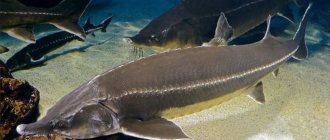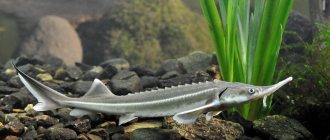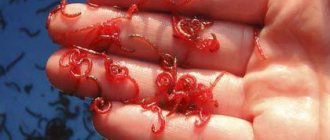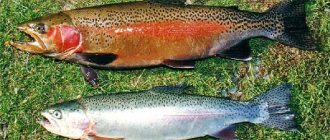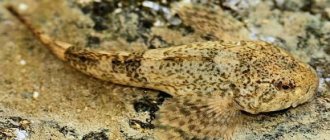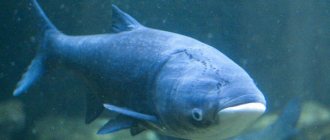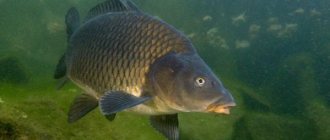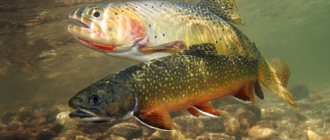general information
Nereis
Nereis are polychaete worms belonging to the Nereid family, which received their name from Greek mythology.
There is a myth that the god Nereus married the daughter of Oceanus, Doris, who gave birth to 50 Nereids - sea nymphs with a cheerful disposition. These nymphs were always next to the god of the sea, Neptune, and amused him with their dances and games.
Most likely, Nereis got their name for their beauty, since their bodies have a bright green color that shimmers with rainbow colors, like a gasoline film in water. The green body is bordered by red or bright orange bristles.
Features and habitat
The Nereis worm lives in the warm seas of the Asian continent, the Japanese, Caspian, Black, Azov and White Seas. Even under the Soviet Union, in the forties of the twentieth century, biologists studied this worm and benefited from it.
In the Caspian Sea, sturgeon fish experienced great hunger, while the Black Sea and Azov sturgeons had an abundance of food. Therefore, they decided to urgently resettle Nereis in the waters of the Caspian Sea.
The transportation procedure was not easy; it was necessary to use refrigeration machines and transport the worms over long distances. Several thousand of them were brought in, but after twenty years they took root perfectly, multiplied throughout the seabed and fully provided food for fish, Kamchatka crabs, seagulls and local mallards.
Nereis is a sea worm belonging to the Nereid family, a genus of Polychaetes. They are sixty centimeters long, but there are also larger specimens - green nereis. Their color is very unusual - green, iridescent into turquoise and purple. The bristles located on both sides of its body are orange-red.
Nereis belong to the type of annelids, they are the most ancient. Their long body is divided by an annular septum into segments, which can number a couple of hundred. Each segment has a lateral growth, with a primitive limb and a seta on the edge.
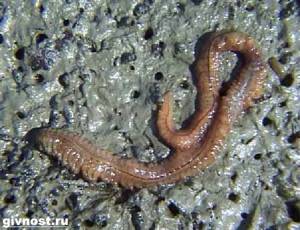
in the structure of Nereis - longitudinal and circular, with their help the invertebrate easily moves and burrows into the sea soil. The internal organs of Nereis do not have lungs, so they breathe through their skin.
We recommend reading: Schwyz breed of cows - characteristics and description with photos, reviews
Digestion occurs as follows: through the mouth, with the help of the antennae, Nereis pushes food, it enters the digestive canal, is digested and leaves the anus, located on the opposite side of the worm. Polychaete worms have a clearly visible head, with a pair of eyes, antennae and olfactory tentacles.
Scientists have become aware of one amazing ability of this worm: they can communicate with each other. The skin glands of Nereis produce certain chemicals, which are then released into the water. These substances have a name we all know - pheromones.
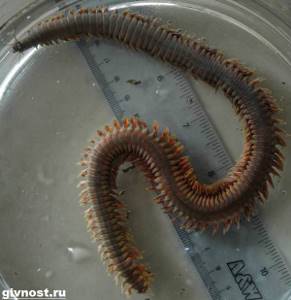
One type of pheromone is used by individuals in search of a mate. Another species has a different smell; upon smelling it, Nereis understands that he must run, there is an enemy nearby and the worm is in danger. There is a pheromone with a very unpleasant odor, which invertebrates use to repel the stranger who attacks them.
With the help of a special organ, Nereis capture the smallest particles of these odors. During laboratory research, scientists tried to remove this organ from them, and the worms became absolutely helpless, they could not find food and detect and hide from the enemy in time.
By combining different compounds of chemical elements, then injecting them into water with Nereis worms, the researchers carefully observed them and studied their behavior.
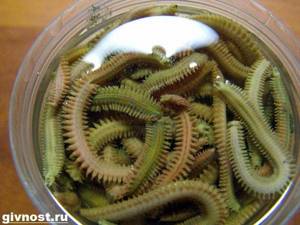
This way they figured out the formula and purpose of each smell. Therefore, perhaps thanks to the Nereis, pheromones are so widespread and popular in our time.
Nereis habitat
Nereis live on the seabed, in burrows. They are eaten in large quantities by a variety of commercial fish, Kamchatka crabs and other marine animals.
Nereis are very high in calories. They are the basis of the diet of sturgeon, which is found in the Caspian Sea. They were even specially brought there for this purpose.
Several tens of thousands of Nereis were transported from the Azov Sea to the Caspian Sea in special refrigerators. Moreover, they adapted well to the new conditions and multiplied in large numbers. Today, the mass of these creatures in the Caspian Sea reaches millions of tons. As a result, Caspian sturgeons almost completely switched to feeding on Nereis.
Habitat
Sea worms themselves serve as prey. A huge number of commercial fish and crustaceans consume Nereis. The reason is that these invertebrates are very high in calories; after eating Nereis, the fish does not feel hungry for a long time.
This species lives on the seabed, in burrows that Nereis dig. In order to provide food for valuable species of fish, such as sturgeon, man artificially tried to breed sea worms. Nereis were transported from the Azov Sea to the Caspian Sea in specially equipped refrigerators. The invertebrates have taken root well; now in the Caspian Sea the number of Nereis has exceeded tens of tons. The sturgeon has completely switched to these invertebrates and feeds mainly on them.
This type of invertebrate is considered to be the orderlies of the seabed. In huge groups, invertebrates gather near the corpses of marine inhabitants and eat carrion, thereby protecting the rest of the underwater inhabitants from corpse poison.
Features of this type
Like any living beings, Nereis have their own language of communication. Sound waves and vibration are unusual for these invertebrates; they communicate by releasing special pheromones. The skin glands of these representatives of the underwater world are capable of secreting chemicals, with the help of which the Nereis exchanges “information.”
Pheromones released by representatives of this species fully convey the necessary information. During the mating season, the invertebrate secretes a pheromone responsible for attracting the opposite sex. When danger approaches, Nereis releases a pheromone that emits an unpleasant odor. This pheromone is designed to scare away enemies. Worms are able to warn their relatives about danger using pheromones; the warned animals have time to hide.
A special tactile organ is responsible for receiving pheromones. It is vital; if for some reason this organ stops functioning, the invertebrate will soon die, as it will not have time to hide from the impending danger.
Search and methods of extraction
Nereis is not easy to get. The sea worm is searched for in estuaries, estuaries of rivers flowing into seas or salty estuaries, and in silt deposits. Soil from the bottom is scooped up with shovels and laid out on the shore, or on special tables, which are taken into the water if the depth allows. The dirt is sorted out, washed away with water, and Nereis is selected. Store it in jars with wet seaweed or with the soil in which it was found. It is difficult to find sea worms in stores. It dies 1.5-2 days after being removed from its natural habitat.
But local residents living near the habitats of Nereis dig it for sale. On the way to estuaries or seas to catch mullet and mullet, you can often find advertisements for its sale.
The character and lifestyle of Nereis
Nereis, despite their, to put it mildly, unattractive and frightening appearance, are timid creatures. And in the event of a collision with someone, they prefer to flee, burying themselves in the bottom of the sea.
They live both in deep water and in shallow water, in estuaries. They spend their entire lives at the bottom, burrowing into piles of silt in search of food. They live in small holes, hiding from their enemies, fish and crabs, who devour them en masse. The lateral processes help them move along the ground, and when they need to swim, they use the processes as fins.
We recommend reading: Scope and benefits of the product
Nereis storage
Of course, for an angler who wants to catch mullet, it will be much easier and cheaper to buy this unusual bait, since about a hundred worms will be enough for fishing (of course, everything will depend on how the bite is). The cost of purchasing a worm will be much lower than if you refuel a car for a trip, and besides, as already mentioned, this process is really complicated, and labor also costs money.
If, nevertheless, you had to dig the worm yourself, then you have to save it for several days, or even weeks, since if the worm disappears, you will feel sorry not for the worm itself, but for the efforts made to get it.
Experienced fishermen know how to preserve the Nereis (estuary worm) for some time, but in most cases these methods take a lot of time, since you have to monitor the worms every day, which is sometimes simply impossible.
Ways to save a worm
These methods are radically different from those that are generally considered “adequate”. The whole point is that the worm does not need to be kept alive, but just to “drive” the moisture out of it, which means killing it.
Yes, everyone will say that they only bite on a live worm, etc., but a live “watery” worm, when cast with force, breaks into the water, and, if you’re lucky, a small piece remains on the hook. The worm preserved using these methods has a completely different viscosity and does not fly off the hook, allowing you to catch several fish with one worm.
- The first method does not cause any difficulties and does not require explanation; all you need is to pour vodka or alcohol into the worm and put it in the freezer. The advantages of this method are that the worm adds its own volume, thus becoming like edible silicone.
- The second method is to salt and dry the worm. To do this, you need to generously cover the washed worm with salt, let it stand in a sieve for about 40 minutes, and then pour it onto a flat, inclined surface. Then it should be spread over the entire area, so that it can dry for about 2 hours. The advantages of this method are that the worm looks more reliable and becomes fleshy, since the salt has drawn out the moisture almost completely.
On a hook, a worm preserved in this way looks much more appetizing. The number of bites, which is the most important thing in the life of every fisherman, on such a worm is no less than on a live one, and if a live worm is baited with ordinary hooks, it will be better to catch a “drunk” or salted worm, since it is more stable .
How to store Nereis
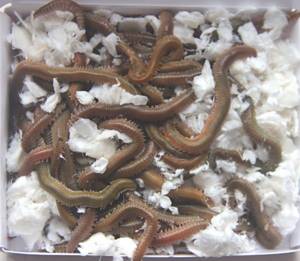
It is unlikely that anyone will argue with the fact that it is best to use fresh, just purchased bait, but it happens that you have to buy a worm in advance and store it for several days, or even weeks. But storing the estuary worm is different from storing other baits: it does not need to be stored alive. It will be necessary to expel all the water from the worm, that is, to actually “kill” it.
The following storage methods are available:
- alcoholization : anglers also call this method “drunk sea worm”. The bait must be filled with vodka or alcohol and placed in the freezer. As a result, Nereis becomes as if silicone and retains its volume;
- salting : the worms are washed, generously sprinkled with salt and left in this state for 30-40 minutes. Afterwards they are transferred to a flat surface, which should be slightly tilted, and left for 2 hours. After this, they are put in the refrigerator, leaving access to fresh air;
- Some anglers prefer to store the worms in their native mud in a cool place at about 10 degrees, but this method will keep the bait for 1-2 days.
The first two methods allow you not only to preserve the Liman worm, but also to improve its structure: the bait looks more appetizing and does not fall apart so much on the hook.
It is important to remember that the worm cannot tolerate high temperatures and will die in the heat in just a couple of hours.
Video
Nereis on a hook
This worm is attached to a hook (usually No. 7) in different ways: for catching small fish - one piece at a time, for large ones - whole, pulled onto the fore-end from the head - with a “stocking”, or several pieces at once, pierced in the middle.
This worm is very soft and when pressed hard with a finger, it crawls apart. To facilitate the process of placing Nereis on a hook, there is a simple device - a thin metal tube, hollow inside. The worm is first placed on this tube, then the hook is inserted into the hole of the tube and the worm is carefully pulled from the tube onto the hook. With this method, this delicate worm often remains intact and looks more lifelike on the hook. When catching large fish, the worm is put entirely on the hook and part of the leash.
The only drawback of sea worms, perhaps, can only be considered that they have a weak hold on the hook and if there is any, even a small force, they can fall apart, but otherwise this is perhaps one of the best baits for fishing at sea.
How to preserve a sea worm for fishing?
You can store sea worms for quite a long time, you just need to equip a special box for this. It may not be very tall, but it must have sufficient length and width. A mixture of sand and charcoal is poured into the box, worms are launched, covered with wet seaweed and a lid equipped with holes. For bait, hooks No. 7-No. 10 (with an extended shank) are used; the tip of the worm should cover the tip of the hook, and most of the long body should be located on the fishing line.

To ensure that the bait is placed correctly, the worm is placed in advance on a knitting needle that has an empty end. A hook is inserted into this end and the worm is moved from the knitting needle to the hook and line. As a rule, for long-term fishing, significant quantities of worms are placed on the knitting needle in advance. This method is suitable for fairly large fish; It is also possible to use two or more worms. For small fish it is quite possible to use small pieces of worm.


